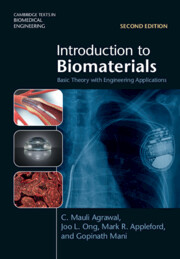Refine search
Actions for selected content:
37953 results in Cambridge Textbooks
7 - Channel Functions
- from Part II - Channel Structure
-
- Book:
- Marketing Channel Management
- Published online:
- 26 November 2025
- Print publication:
- 04 December 2025, pp 152-174
-
- Chapter
- Export citation
2 - End-Customer Buying Behavior and Marketing Channels
- from Part I - The World of Channels
-
- Book:
- Marketing Channel Management
- Published online:
- 26 November 2025
- Print publication:
- 04 December 2025, pp 32-58
-
- Chapter
- Export citation
10 - Channel Coordination
- from Part III - Channel Coordination of Relationships
-
- Book:
- Marketing Channel Management
- Published online:
- 26 November 2025
- Print publication:
- 04 December 2025, pp 209-226
-
- Chapter
- Export citation
Index
-
- Book:
- Marketing Channel Management
- Published online:
- 26 November 2025
- Print publication:
- 04 December 2025, pp 303-312
-
- Chapter
- Export citation
13 - Channel Motivation
- from Part III - Channel Coordination of Relationships
-
- Book:
- Marketing Channel Management
- Published online:
- 26 November 2025
- Print publication:
- 04 December 2025, pp 263-277
-
- Chapter
- Export citation

Introduction to Biomaterials
- Basic Theory with Engineering Applications
-
- Published online:
- 01 December 2025
- Print publication:
- 20 November 2025
-
- Textbook
- Export citation

Green Energy and Sustainable Development
-
- Published online:
- 30 November 2025
- Print publication:
- 31 January 2026
-
- Textbook
- Export citation

Marketing Channel Management
- Organization and Coordination
-
- Published online:
- 26 November 2025
- Print publication:
- 04 December 2025
-
- Textbook
- Export citation
12 - Implications of Decision-Making
-
- Book:
- Cognitive Neuroscience of Decision-Making
- Published online:
- 14 November 2025
- Print publication:
- 20 November 2025, pp 144-151
-
- Chapter
- Export citation
Frontmatter
-
- Book:
- Labour Law
- Published online:
- 02 October 2025
- Print publication:
- 20 November 2025, pp i-viii
-
- Chapter
- Export citation
2 - Basic Properties of Materials
-
- Book:
- Introduction to Biomaterials
- Published online:
- 01 December 2025
- Print publication:
- 20 November 2025, pp 19-46
-
- Chapter
- Export citation
14 - Tissue Engineering
-
- Book:
- Introduction to Biomaterials
- Published online:
- 01 December 2025
- Print publication:
- 20 November 2025, pp 402-434
-
- Chapter
- Export citation
3 - Metals: Structure and Properties
-
- Book:
- Introduction to Biomaterials
- Published online:
- 01 December 2025
- Print publication:
- 20 November 2025, pp 47-71
-
- Chapter
- Export citation
13 - Freedom of Association and Trade Union Autonomy
- from Part IV - Collective Labour Rights
-
- Book:
- Labour Law
- Published online:
- 02 October 2025
- Print publication:
- 20 November 2025, pp 513-565
-
- Chapter
- Export citation
Index
-
- Book:
- Cognitive Neuroscience of Decision-Making
- Published online:
- 14 November 2025
- Print publication:
- 20 November 2025, pp 152-154
-
- Chapter
- Export citation
Preface to the Second Edition
-
- Book:
- Basic Electronics for Scientists and Engineers
- Published online:
- 23 December 2025
- Print publication:
- 20 November 2025, pp xv-xvi
-
- Chapter
- Export citation
1 - Sources, Resistors, and Circuit Laws
-
- Book:
- Basic Electronics for Scientists and Engineers
- Published online:
- 23 December 2025
- Print publication:
- 20 November 2025, pp 1-34
-
- Chapter
- Export citation
Table of ILO Instruments
-
- Book:
- Labour Law
- Published online:
- 02 October 2025
- Print publication:
- 20 November 2025, pp cxiii-cxv
-
- Chapter
- Export citation
11 - Decision-Making Deficits
-
- Book:
- Cognitive Neuroscience of Decision-Making
- Published online:
- 14 November 2025
- Print publication:
- 20 November 2025, pp 127-143
-
- Chapter
- Export citation
19 - Unfair Dismissal
- from Part V - Termination of Employment
-
- Book:
- Labour Law
- Published online:
- 02 October 2025
- Print publication:
- 20 November 2025, pp 861-917
-
- Chapter
- Export citation
